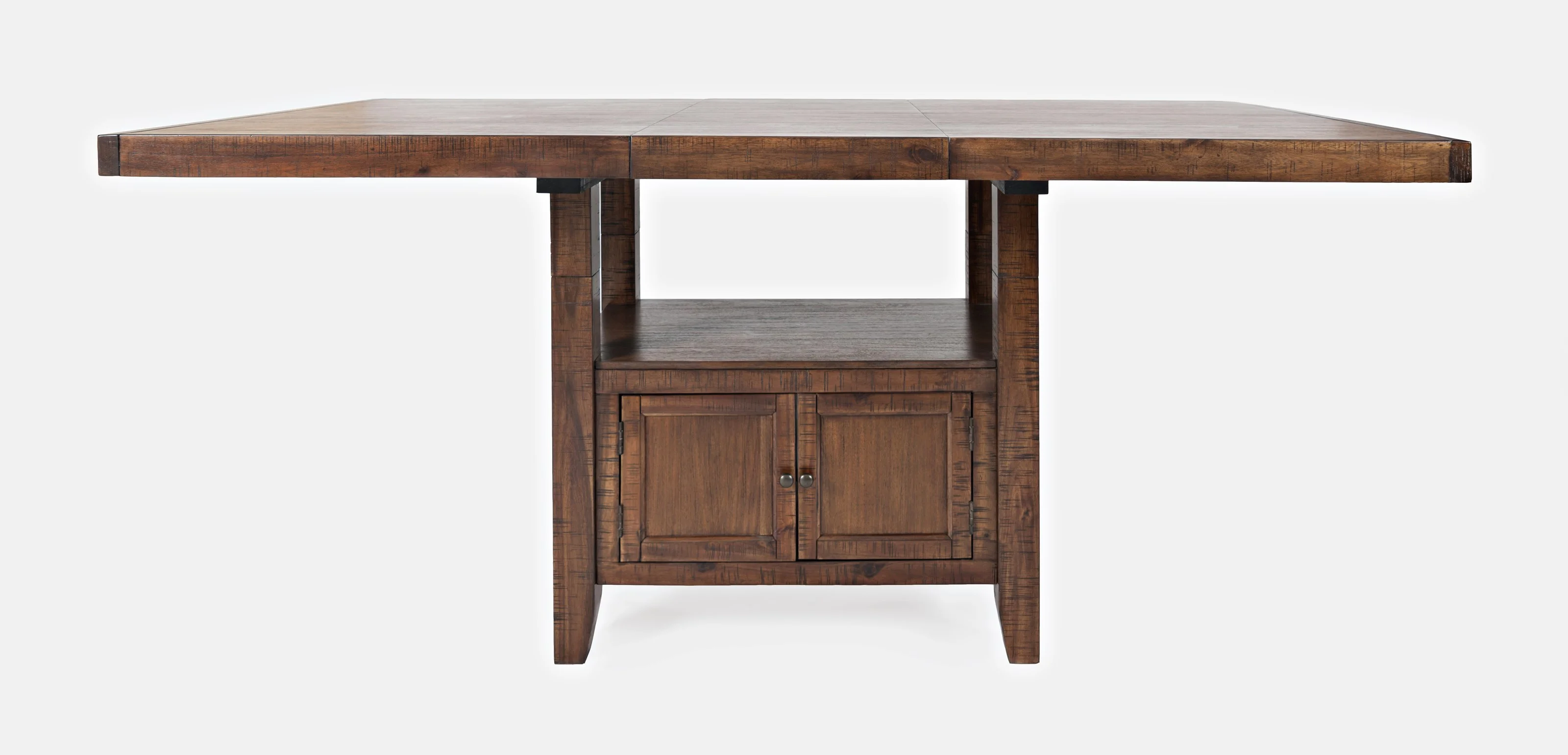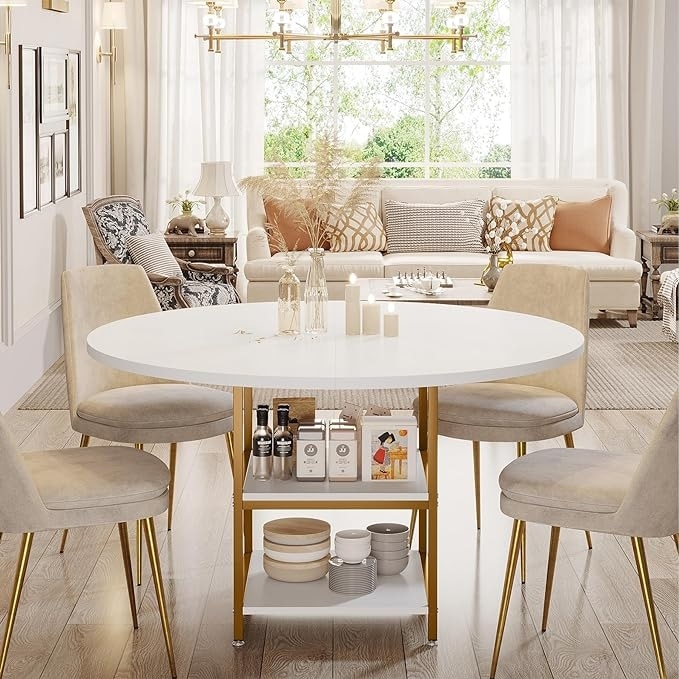How Dining Room Table Legs Can Change the Entire Aesthetic of Your Room
How Dining Room Table Legs Can Change the Entire Aesthetic of Your Room
Blog Article
From Typical to Modern: Locate the Suitable Dining-room Table Legs for Your Style
The selection of dining-room table legs plays an essential function in defining the total character of your space, linking the gap in between traditional craftsmanship and modern-day visual appeals. While timeless styles such as cabriole and transformed legs stimulate a sense of timeless sophistication, contemporary designs like hairpin and geometric choices offer an opportunity for striking visual passion. Reviewing the ideal balance between these styles needs a nuanced understanding of your existing decoration and personal preference. As you think about these components, the concern stays: exactly how can you seamlessly integrate these varied leg designs to develop a harmonious eating experience?
Understanding Table Leg Styles
The variety of eating area table leg styles can substantially affect both the appearances and capability of the area. Each leg design adds one-of-a-kind aesthetic components and sensible attributes, dealing with diverse design choices and usage requirements. Recognizing these designs is crucial for picking the best table that straightens with your total interior decoration vision.
For circumstances, tapered legs provide a clean, classic look that can enhance an area's style, while stand bases provide security and make the most of legroom, making them optimal for smaller sized spaces. Barrette legs, a trademark of mid-century contemporary layout, present an industrial panache, enabling an airy, open feeling. In a similar way, trestle legs stimulate rustic appeal, providing durable support and a sense of eternity.
Additionally, the choice of products plays a substantial function. Wooden legs can bring heat and texture, whereas steel choices typically convey a smooth, contemporary vibe. Eventually, understanding table leg designs is important for developing a cohesive dining location that reflects individual design while making sure usefulness and comfort. By attentively considering these aspects, you can boost both the functional and visual allure of your dining space.
Standard Table Leg Options
When picking dining-room table legs, standard alternatives frequently symbolize ageless elegance and craftsmanship. These styles mirror an abundant heritage and a dedication to quality, making them excellent for those that appreciate classic aesthetic appeals.
Among the most iconic conventional leg styles is the cabriole leg, defined by its stylish curved shape. This design frequently features decorative carvings and is most frequently located in Queen Anne and Chippendale furnishings. An additional prominent alternative is the transformed leg, which flaunts a collection of smooth, rounded shapes that supply a classic appearance while keeping security.
Moreover, the straight leg, while straightforward, provides a unadorned and tough structure that can mix seamlessly with a variety of tabletop designs. For those attracted to ornate describing, claw-and-ball feet legs stimulate a sense of splendour and can act as a stunning centerpiece in any eating area.
Finally, pedestal bases, although not strictly legs, offer an alternative traditional alternative that permits ample legroom and can be beautifully sculpted. Each of these standard leg styles adds to the overall ambiance you could try this out of an eating space, marrying feature with visual charm.

Modern Table Leg Layouts
Modern table leg layouts offer a diverse series of designs that highlight clean lines and cutting-edge materials. These designs frequently focus on performance while working as striking prime focus within an eating space. Minimalist aesthetics prevail, with legs crafted from products such as metal, glass, and crafted wood, which add to a ventilated and contemporary feel.
One prominent style is the hairpin leg, defined by its slender, conical structure that offers security without overwhelming the tabletop (dining room table legs). This design is frequently discovered in mid-century modern furniture and can effortlessly complement numerous table shapes. An additional fad is using geometric forms, where legs might take on asymmetrical or angular types, adding visual passion and a touch of Discover More Here artistry

Blending Styles for Unique Spaces
Frequently, property owners seek to produce special dining spaces that reflect their individual design by mixing numerous style aspects. This method enables the unification of diverse aesthetic appeals, leading to a harmonious yet distinct setting. Matching a rustic wood table with sleek, modern-day steel legs can develop an appealing contrast that raises the space's overall allure.
Furthermore, integrating vintage table legs with modern tabletops can evoke a sense of history while maintaining a modern-day perceptiveness. Such combinations not only display private taste yet also urge imagination, allowing home owners to curate a space that feels both personal and welcoming.
Color plays an important role in this blending procedure; selecting table legs that enhance or contrast with the existing shade scheme can improve visual passion. For example, whitewashed legs can soften the daring of a dark table surface area, producing a well balanced aesthetic.
Tips for Selecting the Right Legs
Choosing the right table legs is vital for attaining both functionality and visual allure in your dining area. Begin by taking into consideration the overall design of your area. Traditional settings take advantage of legs that feature complex makings or turned styles, while modern rooms might ask for sleek, minimalist designs.
Following, assess the height and security of the legs. dining room table legs. Basic table vary in between 28 to 30 inches in elevation, so ensure the legs match this dimension for convenience. Additionally, right here durable products, such as wood or steel, can enhance security and long life
Assess the leg shape also-- options include directly, tapered, or pedestal styles. Straight legs use a timeless look, while tapered legs can add a touch of elegance. Pedestal bases give ample legroom and are optimal for smaller spaces.
Final Thought
In recap, choosing the excellent eating area table legs calls for careful consideration of both traditional and modern designs. Traditional options such as cabriole and transformed legs supply classic style, while contemporary styles like barrette and geometric forms supply a contemporary touch. By harmonizing leg style, elevation, and material with the overall décor, a cohesive and welcoming environment can be accomplished. Ultimately, the selected table legs ought to reflect the wanted visual, improving the dining experience within the area.
The range of dining area table leg styles can dramatically influence both the aesthetic appeals and performance of the space. Inevitably, comprehending table leg designs is necessary for producing a natural dining location that reflects personal design while guaranteeing practicality and convenience.One of the most renowned traditional leg styles is the cabriole leg, defined by its stylish rounded shape. Straight legs provide a classic appearance, while tapered legs can add a touch of elegance.In recap, picking the suitable dining space table legs calls for cautious factor to consider of both conventional and modern-day designs.
Report this page